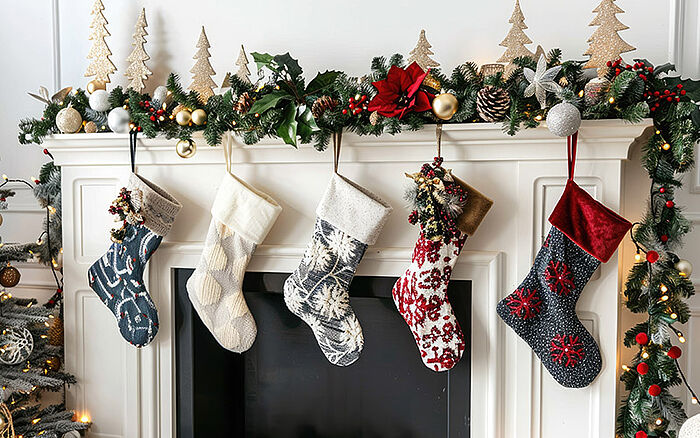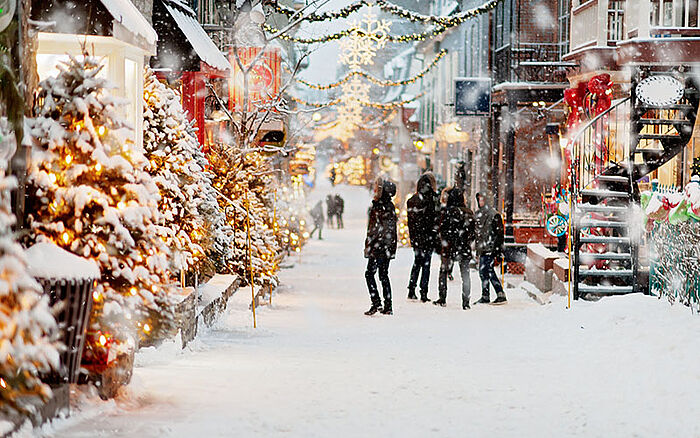
Everyday IP: Decking the halls with IP rights
Nothing inspires Intellectual Property (IP) innovation quite like our love of celebration. That is certainly the case when it comes to Christmas decorations, an ever-expanding frontier of bright lights and IP rights.
For many years, patents have paved the way for some of our favorite decor, striking a delicate balance between new ideas and long-held traditions. Grab your Santa hat and join us on a festive journey through the most wonderful IP of the year.
Rocking around the Christmas tree
The Christmas tree is perhaps the holidays' most iconic decoration, originating in 16th-century Germany but with roots arguably going back before the festival itself. While artificial evergreens may seem like a modern invention by comparison, the truth is that one of the earliest models was patented in 1882 — a portable device designed with detachable wire branches for easy assembly. Another got its patent in 1911, and though it hardly resembles the verdant green beauties aglow in today's living rooms, it was nonetheless a step forward in "fake" by using a fireproof coating to simulate bark. Another sprouted in 1926 and boasted a fixed star and bulbs, while a 1927 version made great strides in lushness and collapsible convenience. More familiar designs, such as one patented in 2014, combine all these innovations with modern technology to create a pre-decorated tree that can be controlled via the internet.
When opting for the real thing, a spruced-up spruce would do little good without sturdy support, so early decorators were indebted to Christmas tree holders like one patented in 1880. A 1933 patent sought to keep the tree's base from touching the ground, while another made the tree spin in place; unveiled in 1946, a nostalgic design prioritized beauty by simulating the pitched roofs of colonial houses. Since then, these stands have developed into showpieces, such as one invention revealed in 1992, which forms a ring so a model train can orbit the tree.

Although natural laws, products and phenomena are excluded from patentability, the venerable Christmas tree represents a blend of plant, tradition and technology. The patents behind this creativity prove that even the season's centerpiece is a hub of invention.
Just as important as the tree and its stand are the adornments. With limited configurations and simple but elegant styles, the earliest creations marked the start of a long decor story. The 1960s introduced lightweight, durable options and baubles displaying family photographs. More recent innovations have embraced safety features like smoke detectors and fire extinguishers.
Despite all of this glowing innovation, the Christmas tree was not always the darling of the holidays. A New York Times article published in 1883 opined that the ever-present evergreen had "had its day" and should "have no place in our beloved land." As a replacement, the author pointed to reviving a personally beloved tradition: the Christmas stocking.
Stockings hung by the chimney with care
In 1889, one of the earliest stocking design patents rolled out under the decidedly unglamorous name of "design for a bag." Herein lies a hint as to why this particular decoration may have temporarily lost favor: As gifts got bigger and more elaborate, the size and shape of a sock-like bag became limiting. According to The New York Times' impassioned author, the solution was the Smith Christmas Stocking. Unlike others of its time, this invention was made with elastic to fit more and larger items, while its toe included a water-tight metallic compartment for molasses candy.
Since then, the Christmas stocking has seen many innovations but generally retains that familiar shape and purpose. American inventor Joan D. Sheridan, for instance, has received various design patents, including a figure skate, a laced shoe and a heeled boot – all instantly recognizable as part of this long-standing tradition. Even animal paws and horse legs have found their way onto festive mantles.

Whether a home has a fireplace or not, Christmas stockings still provide a place for all manner of holiday treats. Embodying timeless customs and inventive wonder, these simple solutions spark joy year after year.
However, that is not to say that stockings have stagnated. Newer technology like the "Santa Claus Detector," patented in 1996, takes the familiar concept and adds a new spin: The device lights up when Santa comes down the chimney and tugs the pull cord.
One might argue that a shining light is the perfect way to highlight St. Nick's presence, but it is also worth noting that illumination has always been a central theme in Christmas decor. While it harkens back to the candles that once brightened (and sometimes burned) the evergreens of old, our fascination with holiday lighting is both a dream of the future and a tribute to the past.
Where treetops glisten
The story of Christmas lights cannot be told without a nod to Thomas Edison's 1880 light bulb patent that started it all. Thomas Edison even put a strand of newly invented bulbs around his lab that Christmas, creating the first electric light display; two years later, his friend Edward H. Johnson hand-wired 80 red, white and blue bulbs for his holiday tree. From there, inventors worked on various technologies to eventually create LEDs, including a 1962 filing titled "semiconductor radiant diode." The result was a leap forward in illumination that was brighter, safer and easier to manage.
For example, a 1975 filing helped make it possible to control lights individually. This, in turn, laid the groundwork for intricate displays and related technologies, including a 2013 grant covering an apparatus and method for matching light and sound. This system converts sound waves into signals that create a visual show in time with music.

Each twinkling Christmas display tells a story of imagination and invention, where scientific breakthroughs inspire our emotions and expressiveness in extraordinary ways.
Perhaps most interesting, however, is a 2004 patent filing for a flame-simulating light device. Think about the series of events that made this invention possible: First, people used candles on Christmas trees, transitioned to safer electric lights and eventually used that progress to recreate the familiar flickering flame. Clearly, Christmas inventions — and the IP protections that make them possible — will always exist in conversation with one another, a tapestry woven of both tradition and technology.
Of course, the story is never ended. There will always be opportunities for new inventions, discoveries and creations, which means there will always be a place for IP protection. Contact the Dennemeyer team today to see how we can help you light up a world of holiday magic.
Filed in

IP infringement disputes abound in the film industry but some are more dramatic than others. Explore the unusual IP cases spawned from prominent movies.

Grab your warmest jacket and explore the Intellectual Property (IP) behind some of winter travel's shining inventions.



